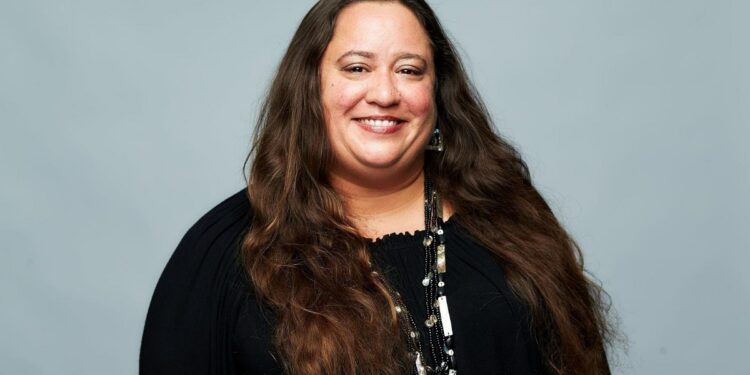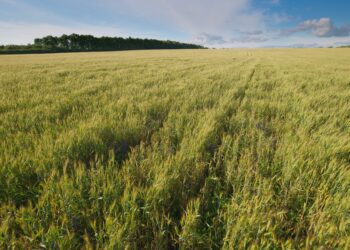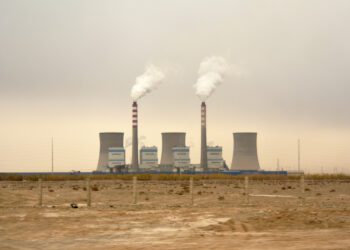Over the last few years, you may have noticed a new practice popping up at the Sierra Club. You may have seen people open meetings or introduce themselves by acknowledging that they are on the lands of particular Indigenous nations, or even been asked to do so yourself. Though new to the Sierra Club, the practice of land acknowledgement has ancient roots. Far from serving as mere virtue-signaling, it has deep implications for how we do environmental and conservation work.
This practice has risen in tandem with the Sierra Club’s deepening engagement with Indigenous Nations over the past decade. We’ve worked with Gwich’in leaders to protect the Arctic Refuge from oil and gas drilling, fought gas export facilities on the Gulf Coast with the Carrizo Comecrudo Tribe, and supported the Indigenous-led struggle against the Line 3 pipeline in Minnesota, among many other fights where we have centered, partnered with, and supported Tribal communities across the country. We’ve had to learn many lessons about how to show up in authentic, principled partnership.
But there’s much more we can do to become better allies to Indigenous Peoples in the struggle for climate and environmental justice. The Sierra Club’s Director of Organizational Transformation, Hop Hopkins, sat down with Angela Mooney D’Arcy (Juaneno Band of Mission Indians, Acjachemen Nation) to discuss land acknowledgments and how we can go beyond acknowledgment to truly honor Indigenous environmental leadership. D’Arcy is the founder and Executive Director of the Sacred Places Institute for Indigenous Peoples, a Los Angeles-based, Indigenous-led organization that works to build the capacity of Tribal Nations and Indigenous Peoples to protect sacred lands, waters, and cultures. She is also the Co-Director of the United Coalition to Protect Panhe, a grassroots alliance of Acjachemen people dedicated to the protection of their sacred sites.
Hop: So our first question for you, Angela, is what is a land acknowledgement?
Angela: The specifics of a land acknowledgement are going to vary depending on who you ask and whose ancestral homelands you’re in. But at a very basic level, it’s just locating yourself spatially, understanding and then acknowledging that you are on someone’s ancestral homelands.
Hop: And how and why did the practice develop? What’s the origin?
Angela: I would say that the practice is as old as peoples are. The year before the pandemic, I had an opportunity to travel to Australia. I was talking to an elder, and he said that prior to contact, the common protocol was that anytime you traveled into anybody else’s land, you had to be able to acknowledge them respectfully in their language. That specific practice of greeting people in their languages may not be the same in Indigenous communities everywhere, but I think it’s always been a practice to understand where you are and recognize and respect when you’re a guest in someone else’s space. That might mean bringing gifts to people asking for permission to be there, and acknowledging not only the people of the land, but also the land itself and the animal relatives. So I would say that the land acknowledgement practice is as old as humanity, if not older.
But more recently, it’s been identified as something of importance for universities and organizations and even government agencies to do. And in other places they’re way ahead of where the United States is with that. In the US, it’s a practice that maybe started to emerge in a critical mass type of way five to ten years ago, if that.
Hop: Right on, and when should people do one, and why should they do one?
Angela: Well, one of the issues that comes up with land acknowledgements, now that there’s such an interest in doing it, often people get excited about having the product and less so about developing a meaningful process to get there. That’s a long way of saying, ask the people whose actual land you’re on, ask the people whose land you’re acknowledging, when you should do one, why you should do one, and what they want that to be.
If you have already developed or are in the process of developing relationships with local Tribes, then the resources to create a thoughtful land acknowledgement should kind of find themselves. Besides that, there are tons of resources out there. Literally, you can Google “creating a land acknowledgement.”
So one tip is, if you don’t know the name of the native nations whose lands you’re on, you’re not ready to do a land acknowledgment yet. And you would think that that would be a basic thing, but it’s not. You’ll see a lot of land acknowledgments out there that are just very broadly saying Indigenous people were here and you should acknowledge them.
Another thing I would say is, definitely don’t create land acknowledgements in the past tense. There are a lot of land acknowledgments that say “this was once the land of,” right? It wasn’t “once the land of,” it is the land of our people, and whether or not we maintain control over our ancestral homelands, and whether or not that relationship with the land is legally recognized, doesn’t change that fact.
And so when should people do one? Ask the local tribes who you’re acknowledging. Why should they do one? Because we really all are missing out if we’re complacent in or perpetuating the erasure of the largest time period of history of a place. My people have stories about the area now known as Orange County before it was even land, when it was still an ocean. When you don’t do land acknowledgments, you’re reducing the story of humanity and place to such a small fraction of the time that a place has been in existence. But you can’t achieve any sort of environmental justice absent a thorough and full understanding of a place.
Hop: What do you think isn’t well understood about the practice of land acknowledgements? And how can people go beyond land acknowledgments?
Angela: You hear a lot of resistance to this as just another box to check or just something that people who are quote unquote woke are doing now. I think the actual significance of the practice is misunderstood.
I think that people who are resistant to land acknowledgement don’t understand the emotional and spiritual and physical impacts on Indigenous Peoples of centuries of attempted erasure by settler colonial societies. And so, in that sense, this very simple practice of acknowledgement, when implemented thoroughly and consistently, can have a tremendous impact upon a people or peoples whom settler colonial society has attempted to erase in mind, body, and spirit, for centuries.












